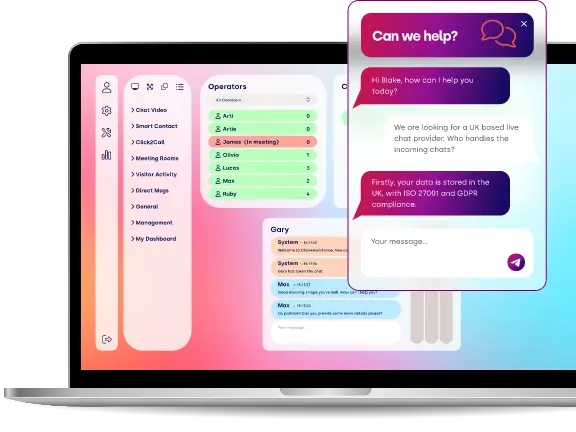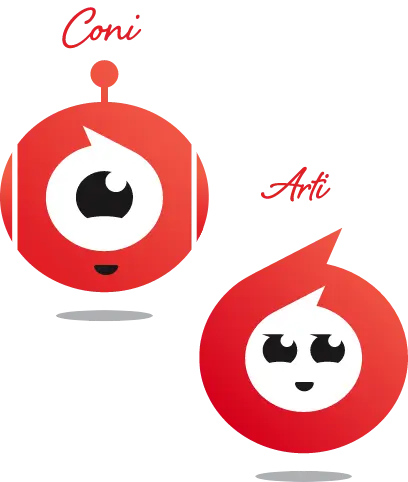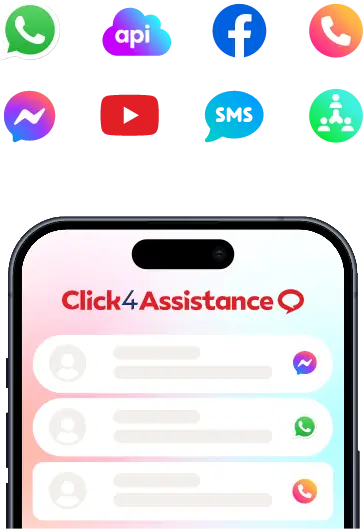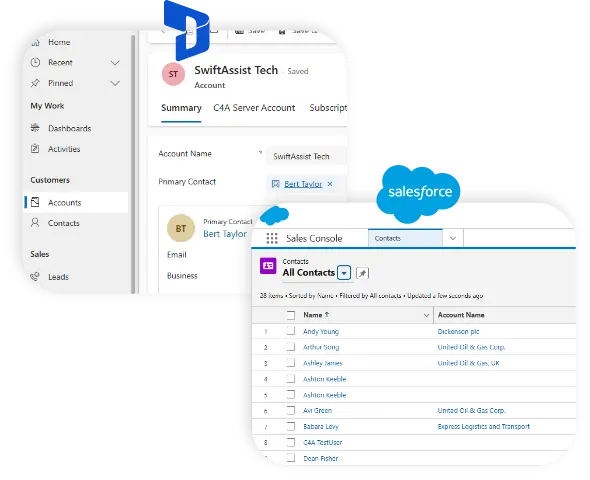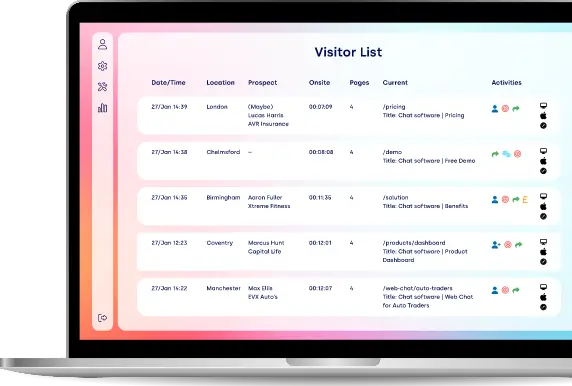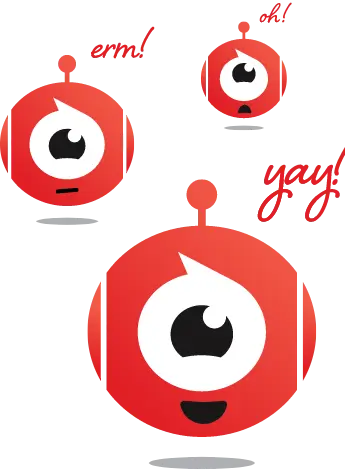Top AI and Conversational Chatbot Examples Transforming Businesses
AI chatbots adapt and learn, while rule-based chatbots follow fixed scripts; together, they improve customer experiences, streamline business processes, and make interactions faster and smarter.
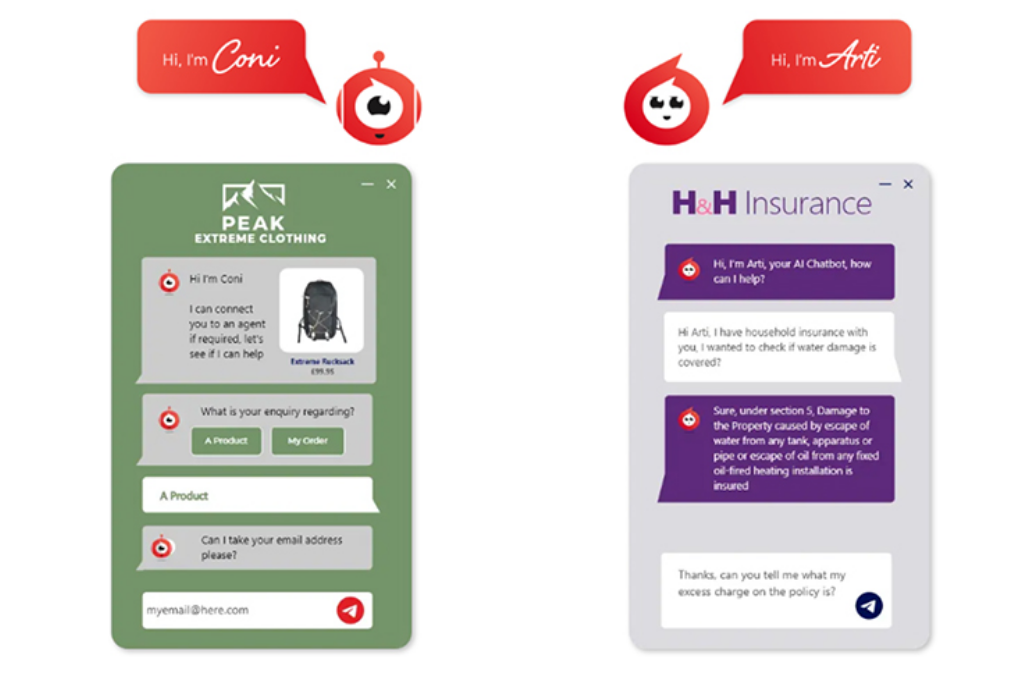
Hey there! Have you ever stopped to think about how chatbots are quietly transforming the way we interact online? Not all chatbots are created equal. Take rule-based chatbots, for instance—often called conversational chatbots—they stick to set scripts and handle common questions. On the flip side, we have AI chatbots, which are a whole different ball game: they learn, adapt, and can even predict what a user might need next. They understand context, remember past conversations, and provide personalised solutions that really make customers feel valued.
From offering instant help to giving tailored recommendations, chatbots are popping up everywhere—from online shopping sites to healthcare services and even within businesses. Thinking about adding one to your setup? Check out the best AI chatbots for business websites, the perks of using chatbots, or dive into conversational chatbots to see what fits your needs!
AI and rule-based chatbots are shaking things up across different industries, making interactions smoother, faster, and more personalised to fit individual needs. Let’s dive in!
Enhancing Customer Support with Chatbots
Customer support is definitely one of the areas where chatbots really shine. Nobody likes waiting around for ages or dealing with slow email replies. AI chatbots can handle complex questions, pick up on user emotions, and even remember past conversations to offer personalised help. For instance, if a customer asks about their latest order, an AI chatbot can pull up the details and provide a precise update without making the customer start from scratch.
On the flip side, rule-based chatbots follow set scripts. They’re great for tackling common questions like "Where is my order?" or "How do I return an item?" While they might not be as flexible, they deliver reliable and consistent answers—perfect for straightforward enquiries.
In the e-commerce world, Shopify stores are using AI chatbots to recommend products based on what users have browsed and bought before. For example, Sephora’s AI assistant suggests makeup that fits a customer’s skin type and style preferences. In contrast, a simple rule-based chatbot might just tell customers if a product is in stock or what the store hours are.
Telecom companies are also benefiting from this technology. Vodafone’s TOBi (AI) can identify network issues and suggest plan upgrades, while a conversational bot handles billing enquiries. One executive summed it up nicely: "A chatbot that understands your customer is like having an extra team member who’s always on hand."
The perks include faster response times, 24/7 support, improved customer satisfaction, and reduced operational costs. This means human agents can focus on more complicated issues while chatbots take care of the repetitive tasks.
Chatbots in the Healthcare Sector: Smarter Patient Support
The healthcare industry is undergoing a remarkable shift, largely thanks to the rise of AI and rule-based chatbots. These AI-driven chatbots act as virtual health assistants, helping users check symptoms, book appointments, manage medications, and provide advice for minor health concerns. Apps like Buoy Health and Ada Health harness AI to assess symptoms and offer tailored recommendations. Meanwhile, mental health bots such as Woebot and Wysa provide mood tracking, exercises, and emotional support, adapting their responses based on previous interactions with the user.
In contrast, rule-based healthcare chatbots, while more straightforward, still do a great job with tasks like scheduling appointments, sharing clinic hours, or giving insurance information. They may not be as flexible, but they provide quick and consistent answers to common questions.
Many hospitals and clinics are now blending both AI and rule-based systems. AI helps prioritise patient enquiries based on urgency, while rule-based bots handle repetitive administrative tasks. This combination lightens the load for staff and ensures that patients get timely and reliable information.
Dr. Emily Carter once said, “AI chatbots in healthcare are like having a nurse in your pocket, ready to assist anytime.” These technologies enhance accessibility, provide 24/7 support, and allow medical professionals to focus on urgent care.
Transforming Banking Services: AI vs. Rule-Based Chatbots
The finance world has quickly jumped on the AI chatbot bandwagon. Tools like Bank of America’s Erica and the fintech app Cleo are here to help users keep track of their accounts, watch their spending, and even spot any suspicious activity. These AI chatbots can handle complex questions like, “How much did I spend on groceries last month?” and can even offer budgeting tips.
On the other hand, rule-based banking chatbots are built for simpler, scripted tasks such as checking account balances, reminding you of payment due dates, or giving payment instructions. They’re reliable and consistent, but they don’t have the flexibility that some users might need.
Right now, many banks are using a mix of both types of chatbots. AI takes care of the more complicated questions and fraud alerts, while the rule-based bots handle the basic enquiries. This blend gives customers faster support, 24/7 availability, and a modern, secure experience.
As one financial manager put it, “An AI chatbot is like having a personal financial advisor available around the clock.
Want to learn more about how AI chatbots can benefit your business?
Learning Smarter: Chatbots in Education
The world of education is increasingly embracing chatbots for both learning and administrative tasks. AI tutors like Squirrel AI and Georgia Tech’s Jill Watson do much more than just answer simple questions. They help students navigate their lessons, customise explanations to match individual learning styles, and even suggest extra resources based on how well students are doing. For example, if a student struggles with algebra, an AI tutor can provide additional practice problems and explain concepts in different ways until the student really gets it.
In the education sector, rule-based chatbots typically handle straightforward tasks like answering campus FAQs, managing enrolment processes, or sending out schedule alerts. They provide quick and consistent responses, freeing up staff to tackle more complex issues instead of dealing with the same repetitive questions. Administrative bots like Ivy.ai can help manage notifications, exam schedules, or reminders for course enrolment, making sure students don’t miss important deadlines.
The collaboration between AI and rule-based chatbots creates a seamless educational experience—students get personalised support while administrative tasks are handled automatically. One teacher jokingly said, “Thanks to a chatbot, I can finally focus on teaching instead of constantly answering the same questions over and over.”
Travel Made Easy with AI and Rule-Based Chatbots
The travel industry is really changing, and a big part of that is thanks to chatbots. These AI-powered assistants, like KLM’s BlueBot and Expedia’s AI helper, can whip up personalised travel itineraries, keep an eye on flight statuses, suggest hotels, and even manage cancellations or changes on the fly. They learn from your past trips and preferences, making each travel experience smoother and more tailored just for you.
On the other hand, rule-based chatbots are there to provide reliable, scripted info like flight schedules, visa requirements, or hotel policies. They’re great for answering common questions and help cut down the wait time for travellers who need to talk to a human agent.
By combining AI with these rule-based systems, travellers get the best of both worlds: efficiency and a personal touch. Imagine having an AI assistant that remembers your seating preferences and suggests the best layovers, while a rule-based bot quickly checks your flight times. The result? A stress-free travel experience with hardly any hiccups along the way.
Entertainment and Media: Chatbots in Action
The world of entertainment and media is really embracing chatbots to enhance user engagement. Take Spotify’s assistant, for example; it provides personalised playlist suggestions based on your listening habits, moods, or even what you’re up to at the moment. Netflix is also getting in on the action, using AI bots to recommend shows tailored to your viewing history and preferences, making your streaming experience feel much more personal. In the gaming arena, AI chatbots like AI Dungeon and Replika create interactive storytelling experiences that evolve based on the choices players make, leading to truly immersive adventures.
However, there are rule-based bots in entertainment that, while simpler, still play a valuable role by providing fixed information like movie schedules, subscription details, or basic FAQs. They ensure that users get accurate information quickly, cutting down on wait times. One gamer even shared, “Having an AI companion while playing feels like collaborating with a co-author on your own adventure.”
The blend on AI and rule-based chatbots in media ensures that users enjoy customised experiences also while having quick and reliable access to information whenever they need it.
Enhancing Workplace Efficiency with Chatbots
When it comes to boosting productivity in the workplace, AI and rule-based chatbots really take the spotlight. Tools like Microsoft Copilot and Slack AI can do everything from summarising emails and managing calendars to generating reports and providing data-driven insights that help with decision-making. As they get to know user habits over time, they can even automate complex workflows, such as putting together weekly performance summaries or prioritising tasks based on urgency.
Rule-based productivity bots complement AI by handling everyday tasks like sending reminders, standard notifications, and workflow approvals. They help maintain consistency and reliability, ensuring that no simple task slips through the cracks.
The result? A work environment that’s more efficient, organised, and productive. Employees can focus their energy on creative and strategic projects instead of getting bogged down by repetitive administrative work. A CEO once said, “Having an AI assistant is like having a team of analysts at your disposal 24/7, and they don’t even need coffee breaks.”
Essential Features to Consider When Selecting AI Chatbots
When it comes to choosing the right chatbot for your business, there are several essential features you should consider to ensure it meets your needs and provides a great user experience:
- Natural Language Understanding (NLU)
AI chatbots are designed to understand context, recognise user intent, and tackle complex questions. This means they can respond more accurately, engage in back-and-forth conversations, and offer relevant suggestions. On the other hand, rule-based chatbots stick to predetermined scripts and often struggle with vague or nuanced enquiries.
- Integration Capabilities
A good chatbot should easily connect with your existing business systems, like CRM platforms, customer support tools, e-commerce solutions, or internal databases. This integration allows for smooth data transfer, automates tasks, and ensures users get accurate, up-to-date information.
- Personalisation
AI chatbots can learn from user behaviour, preferences, and past interactions to provide customised recommendations, solutions, and responses. In contrast, rule-based chatbots tend to give the same responses to everyone, which can limit engagement and satisfaction.
- Security and Compliance
Protecting sensitive user data is vital, especially in sectors like finance, healthcare, and education. AI chatbots need to follow strict security protocols, comply with data protection regulations, and offer encrypted communication to maintain user trust.
- Scalability
Your chatbot should be able to handle an increasing number of users and enquiries as your business grows, all while maintaining performance and response quality.
- Analytics and Reporting
Advanced chatbots provide valuable insights into user behaviour, common questions, and overall engagement. This data helps businesses refine their chatbot strategies, identify areas for improvement, and enhance the overall user experience.
Manage Customer Service with Your Own AI Agent
Meet Arti, your fully trainable AI Agent. Use your website and documents to teach Arti how to deliver fast, accurate, and personalised customer support.
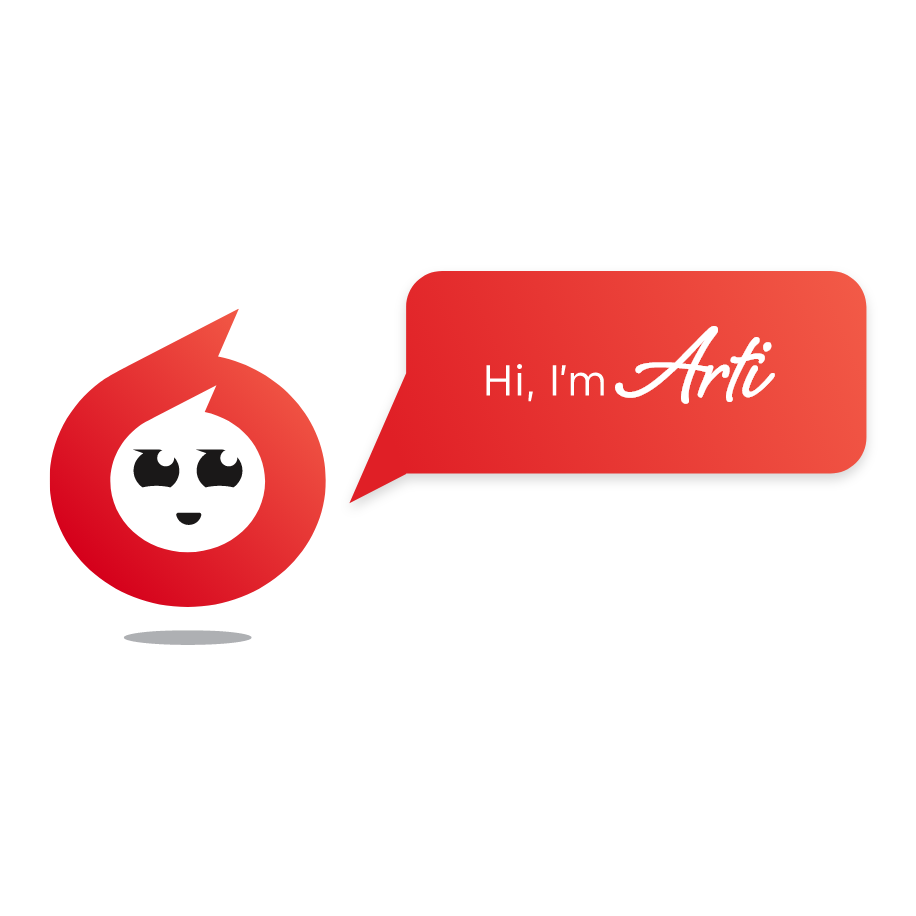
Key Features to Consider When Selecting Rule-Based Chatbots
When it comes to choosing a rule-based (conversational) chatbot, it’s crucial to keep in mind the features that will make it effective and reliable for handling predefined tasks and frequently asked questions:
- Predefined Script Accuracy - Rule-based chatbots rely on established scripts and decision trees. It’s important to ensure these scripts are well-designed and cover the most common user questions to avoid any miscommunication or frustration.
- Ease of Configuration - A good rule-based chatbot should be easy to set up and adjust. Companies should be able to update scripts, add new responses, and tweak workflows without needing a tech expert on hand.
- Integration Capabilities - Even though rule-based chatbots don’t learn, they still need to connect with key systems like CRMs, helpdesk software, or e-commerce platforms to provide accurate information and automate repetitive tasks.
- Consistency - One of the biggest perks of rule-based chatbots is their consistency. They deliver the same correct answer every time for the same questions, which is vital for keeping customers satisfied during routine interactions.
- Security and Compliance - Even the simplest chatbots need to handle user data responsibly. Rule-based bots should comply with data protection regulations and ensure secure channels for any personal or sensitive information they manage.
- Multi-Channel Support - Many rule-based chatbots can operate on websites, messaging platforms, and social media. It’s essential to ensure they work seamlessly across different channels to maintain a consistent user experience.
- Reporting and Analytics - While rule-based bots don’t learn, they can track common queries and response rates. Analytics can help businesses refine their scripts, spot knowledge gaps, and improve workflow efficiency.
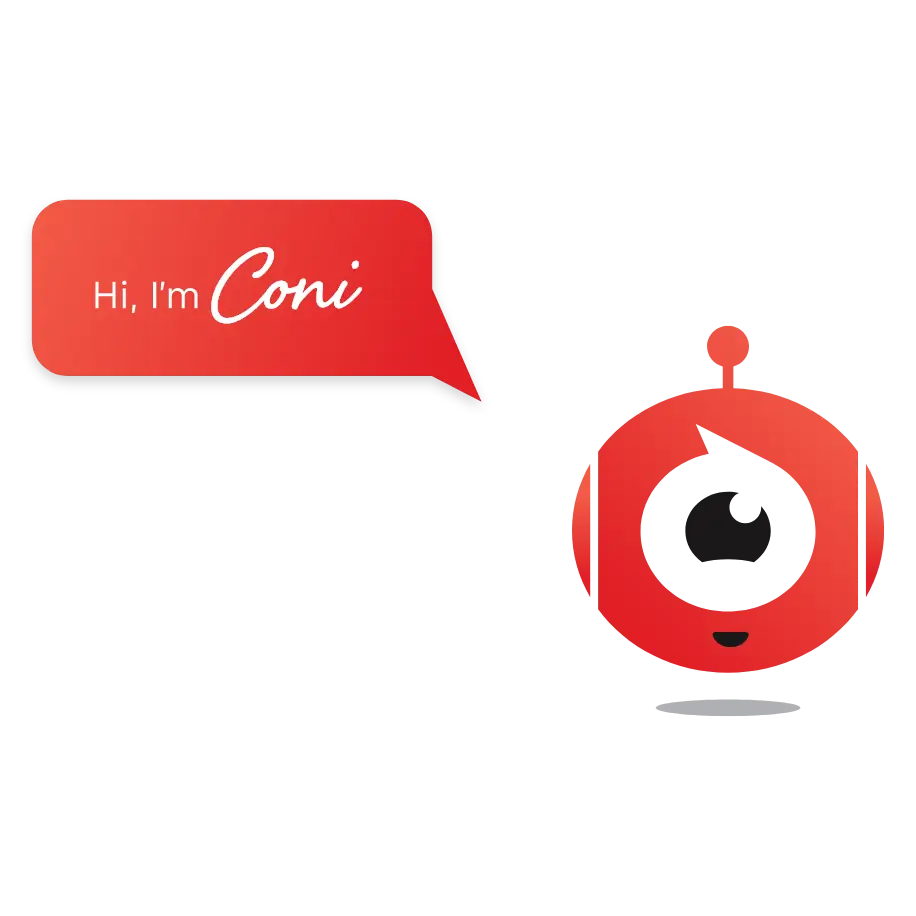
See Coni the Chatbot in Action for Automotive Industries
From automotive to finance and education, our industry-tailored chatbots are designed to meet your specific needs. Discover how chatbots can enhance engagement and streamline customer experiences.
Frequently Asked Questions (FAQs)
- What sets AI chatbots apart from rule-based chatbots?
AI chatbots are built to learn from their conversations with users, understand context, and provide personalised responses. On the other hand, rule-based chatbots follow strict scripts, ensuring they deliver consistent and reliable answers to common questions.
- How can chatbots improve customer service?
Chatbots provide instant replies, are available 24/7, and offer accurate information. AI chatbots can handle more complex questions and tailor interactions, while rule-based bots are great for managing repetitive tasks efficiently.
- Are AI chatbots safe for handling sensitive information?
Absolutely! When set up properly, AI chatbots comply with data protection regulations, use secure communication methods, and prioritise user privacy.
- Can chatbots help businesses save money?
For sure! By automating routine tasks and customer support, chatbots can significantly reduce operational costs, freeing up human agents to focus on more complex issues and boosting overall efficiency.
- Which industries benefit the most from using chatbots?
Sectors like customer support, healthcare, finance, education, travel, hospitality, entertainment, and business productivity all see major advantages from implementing chatbots.
- How do I choose the right chatbot for my business?
Consider your business needs, the volume of enquiries, the level of personalisation required, how well it integrates with your current systems, and the features of the chatbot, such as AI learning abilities or script reliability.
- Can rule-based chatbots handle complex customer enquiries?
Rule-based chatbots work best for simple, repetitive questions. For more complicated or multi-step requests, AI chatbots shine because they can understand context and adapt their responses accordingly.
- Do chatbots enhance employee productivity?
Absolutely! Chatbots really do boost employee productivity. They help by taking care of repetitive tasks, providing valuable insights, organising schedules, and managing everyday workflows. This allows employees to focus more on important work and strategic projects.
Conclusion
AI and rule-based chatbots are changing the game for businesses when it comes to connecting with customers, streamlining operations, and delivering services across a range of industries.
AI chatbots bring in learning abilities, adaptability, and personalised interactions, making them ideal for tackling complex customer questions, offering healthcare tips, giving financial advice, providing educational support, and creating engaging entertainment experiences.
On the flip side, rule-based chatbots offer consistency, reliability, and efficiency for handling repetitive tasks, answering common queries, and supporting administrative functions.
When used together, AI and rule-based chatbots form a comprehensive solution that boosts customer satisfaction, enhances productivity, and reduces operational costs. Companies that leverage the strengths of both types can ensure faster response times, smarter problem-solving, and a more tailored experience for users across all platforms.
Investing in the right chatbot solution not only keeps you in tune with technological progress but also guarantees a smooth, engaging, and effective experience for your customers and teams. Whether you're looking to improve customer service, streamline internal processes, or offer innovative solutions, chatbots are an essential asset in today’s digital landscape.
See Click4Assistance in Action
Schedule a demo with our experts and explore the power of live chat and AI-driven engagement tools tailored to your business.

